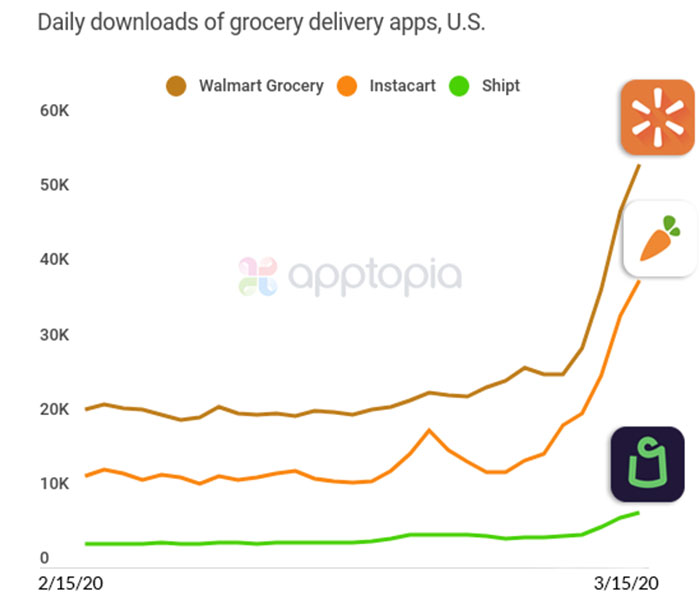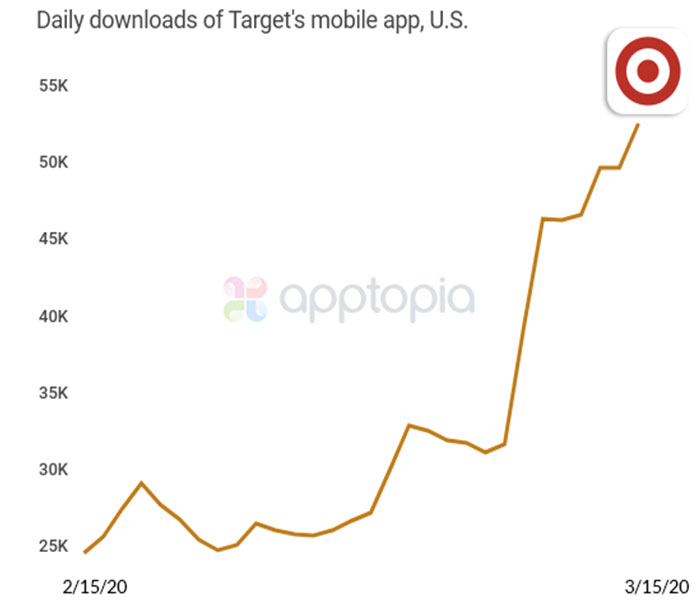The world is a different place than it was just a month ago. As companies try to maintain their business and stay afloat, many are wondering about the long-term impact of coronavirus on the retail and ecommerce industry.
Marketers have adjusted their marketing campaigns over the recent weeks, but those will eventually revert back to normal. Retail and ecommerce, on the other hand, may be in for more permanent changes. The aftereffects of coronavirus are sure to be felt long after it’s gone, surely changing how consumers shop, interact and prioritize lifestyle choices.
We’ve all experienced some consumer shifts, but are they a product of the times or will they stick around for the long haul? Here are some ways the dynamics of retail and services may be impacted near term and in the years to come by the coronavirus aftermath.
Consumers Become Hyper-Focused on Shopping Local
There’s been a growing trend to shop local. But millions have been furloughed or unemployed, many from local businesses including retail shops. In many places, keeping dollars in the local community and supporting small businesses post-pandemic will become more important than ever.
I wouldn’t be surprised to see local restaurant days or other small business days pop up across the country. Communities have a way of coming together after catastrophes like New Orleans did after Hurricane Katrina.
Local businesses should invest in growing their online presence and their email and SMS subscriber list for when things return to “normal.”
E-Grocery Delivery Goes for a Ride
Online grocery adoption has been slow in the U.S., but the coronavirus pandemic may turn out to be the catalyst grocers have been seeking.
According to CivicScience, 47% of consumers said they were shopping for online groceries more during the week of March 22, 2020, compared to only 11% just three weeks prior. And a recent Gordon Hasket Research Advisors survey conducted on March 13, 2020 found 41% of those who ordered food online during the previous week were first-time online grocery customers.
Apptopia reported a spike in app downloads for e-grocery services. Walmart’s grocery app downloads increased by 160% and Instacart by 218% compared to the average in February.

For consumers, one challenge with e-grocery is getting used to selecting and ordering a large number of items. Normally, the time to adjust to this process can be too much of a hurdle, but forced quarantines have accelerated that process. The convenience may be too much for some consumers to ignore post coronavirus.
BOPIS and Curbside Pickup Accelerate
Buy-online pick-up in-store (BOPIS) and curbside pickup have become increasingly popular, but similar to e-grocery have seen a sharp increase because of coronavirus.
According to Adobe, BOPIS saw a 62% year-over-year increase from Feb. 24 to March 21, 2020, and according to apptopia, U.S. downloads of Target’s mobile app more than doubled from Feb. 15-March 15, 2020. Arts and crafts retailer Michael’s and fabric retailer Joann are two of many who started offering curbside in response to the call for social distancing.

As with e-grocery, BOPIS and curbside are all about convenience. For retailers, this comes with both pros and cons. In-store foot traffic drives planned and unplanned purchases and helps them merchandise the square footage they’re already paying for. On the other hand, pickup services drive sales from convenience-minded shoppers and can make store economics look “normal.”
According to Target CEO Brian Cornell, when an online order is fulfilled from the back of a store instead of an FC, about 40% of the cost goes away. And when a customer orders online and uses BOPIS, curbside or Shipt, about 90% of the cost goes away. So, there are some hefty benefits for stores to keep the adoption of these services high.
Even with BOPIS adoption increasing over recent years, the necessity of using it now may cause permanent adoption to spike.
Improving the In-Store Experience
While brick-and-mortar retailers were already investing in ecommerce and reshaping their store economics to become more profitable, massive store closures may force them to rethink their physical assets. Every CEO has to be thinking, “What if this happens again?”
Thus, we may see store footprints shrink further, meaning less staff required to operate them. We may see an increase in offerings like BOPIS and same-day delivery to hedge against a possible future situation.
We may also see more testing of concepts that draw customers into stores, whether it’s experiential elements like VR or designing entirely new concepts. Some are already planning pickup-only locations.
Of course, there may be a boomerang effect where consumers will want to shop stores because they crave the social aspect. But will retailers benefit from this or local shops?
At-Home Fitness Goes Mainstream
The at-home fitness market, from stationary bikes and treadmills to smart fitness mirrors, has been increasing in popularity and self-containment may finally convert skeptics into customers. Just because gyms temporarily close their doors doesn’t mean people want to stop exercising.
With people forced to exercise at home, many may adapt to the flexibility it affords, especially if they recently purchased equipment. While the social aspect is one draw at the local gym, at-home providers like Peloton provide an online community of friends and virtual high-fives.
They also offer instructors to keep you motivated and on-task. Users can partake in live and recorded workouts, including engagement with other users and instructors. Now, with connected bikes, treadmills, and smart workout mirrors there are devices to meet just about everyone’s needs.
An Increase in Popularity of the “Side Hustle”
Like in previous recessions, unemployment is a hard-hitting reality of the pandemic. While jobs were lost in all sectors and levels, uncertainty may cause workers to look for added income and protect against future outbreaks.
We may be at a similar turning point, but unlike in the post-9/11 world with its explosion of entrepreneurship, we’ll more likely see a greater emphasis on gig economy jobs. These service-type businesses may help not only individual workers but also retail businesses expand and thrive in areas like e-grocery.
Subscription Services Get a Lifeline
It seems like everything is subscription-based nowadays. I never thought they were a sustainable business model, but consumer reliance on delivery has substantially increased with coronavirus. This speaks to the heart of product subscription businesses.
One common challenge with this model is the cost of customer acquisition. Now, between consumers seeking out subscription services (reducing acquisition cost) and the convenience factor, this may be a time for these companies to retain customers and remain viable.
The Supply Chain Evolves Yet Again
The retail supply chain, which has already been evolving, is one again under pressure to adapt. As more and more U.S. retailers have outsourced manufacturing overseas, especially to China, they put most or all of their eggs in one basket, and are now paying the consequences. Some have already reallocated sourcing to other countries like Vietnam in the wake of the 2019 trade/tariff wars, but even that is tied up in coronavirus-related issues.
Retailers have to rethink their manufacturing and distribution models and plan for diversification. As a result, some may re-shore a portion of their manufacturing, while others set up multiple facilities in different countries to mitigate any potential future risk.
For consumers, this might mean higher prices. By reducing production at certain facilities, a company’s power to negotiate price may be diminished. Layering on additional costs for shipping from multiple facilities may force retailers to pass on the added costs. It might be tough on consumers but a boon for those in the supply chain business.
Imagining the Post-COVID World is Hard
Will we be in a prolonged recession, or slide right past it to a depression? If the economy recovers quickly, will consumers be more reluctant to spend, especially during the Q4 shopping season? And what if a second wave hits this fall as some predict?
While there are many unknowns, we do know that consumer shopping habits will change, and retailers need to adapt in concert while remaining financially viable. With adversity comes opportunity. For retailers, focusing on customer needs and building loyalty may never be as important as it is right now.
Greg Zakowicz is a marketing strategist and content team lead with Omnisend

